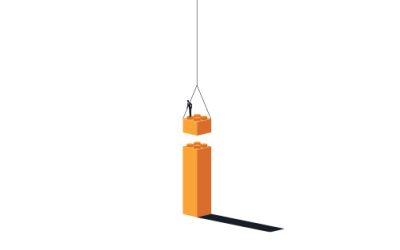When you talk to Sam Edelman, one thing becomes clear right away: she moves fast.
As a Senior Advertising Partnerships Manager at BenefitHub, Sam sits at the intersection of media, e-commerce, and performance marketing — connecting top consumer brands with millions of ready-to-shop users. Her energy, precision, and process have made her one of the top 10% performers using Ad Orbit in 2025.
In this edition of The Sales Blueprint, we dig into how Sam structures her day, builds a healthy pipeline, and balances performance with perspective.
Q: Let’s start with your role — what do you do at BenefitHub, and what’s your typical deal cycle look like?
Sam: I manage advertising partnerships for BenefitHub, which is a perks and discounts marketplace with exclusive deals Members won’t find anywhere else. We have more than 2,000 merchants — from Nike to mortgage providers — and my job is to help those merchants stand out with high-impact ad placements across our platform and newsletters.
Our users are employed, have a higher household income, and are looking to save — so it’s a great audience for brands. The sales cycle can be incredibly fast: sometimes one to two days for existing merchants, or up to a few months for new ones. On average, I’d say about ten days from pitch to close, which is a dream compared to my old media-selling life where deals took six to eight months.
Q: What kind of deal sizes are typical for you?
Sam: For existing advertisers, average orders range from $10–25K per month and up depending on their KPIs.. It really depends on whether it’s remnant inventory or a premium placement — but speed and volume are key.
Q: How do you balance new business with renewals?
Sam: Right now, about 15-20% of my total revenue comes from new advertisers. We track it closely and not just first-time deals, but incremental revenue from those same brands. The rest is renewals and upsells with existing merchants.
We recently partnered with a third-party agency for prospecting, but a lot of our new leads come straight from the merchant team. Once a new brand joins BenefitHub, I step in to handle their ad strategy.
Q: What does a typical day look like for you?
Sam: It’s about half meetings, half building plans. I’ll have 10–12 new advertiser calls a week, plus 5 or so with existing ones to review metrics and plan next steps.
I’m big on time blocking — mornings are for pitching and creative work when I’m sharpest; afternoons are for follow-ups and deal management. And I’m obsessive about my to-do list: what’s pending, what’s booked, and which IOs are waiting on signature.
When the workday ends, I’m offline. I have a one-year-old, and I guard that family time. If something’s urgent, I’ll log back in later, but boundaries matter.
Q: What are your non-negotiable habits for staying productive?
Sam: Every morning starts with inbox zero and a fresh list. I track everything: booked revenue, open pipeline, pending IOs. Not just in Ad Orbit, which is great, but also in my own audit sheet.
I’m competitive, but also team oriented and like to share ideas and sales efficiencies. I like knowing exactly how many meetings, emails, and proposals it takes to close a deal. That way, I can adjust the math when something’s off.
Q: You mentioned you were once a media buyer. How does that shape your sales style now?
Sam: It’s huge. Being sold to for years taught me what works and what doesn’t.
I remember the reps who made my job easier — they summarized next steps clearly, sent recap decks I could forward straight to clients, and weren’t robotic.
Now, I try to do that for my advertisers. My goal is to make it easy for them to “sell me” internally when I’m not in the room.
Q: What’s one unconventional tactic that consistently wins deals for you?
Sam: It’s super simple — borderline blunt — but if someone ghosts me after showing interest, I’ll just email:
“Still interested?”
That’s it. No fluff. It works every time. They either re-engage or tell me what changed, which is valuable either way.
Nick (Ad Orbit): That’s right out of Never Split the Difference!
Sam: Exactly. Even a “no” helps me re-target them later.
Q: What’s your take on where the media and advertising world is headed next year?
Sam: I’m excited about better transparency and tracking. With our new app launch and enhanced reporting, we’ll be able to show advertisers more granular performance data.
I’m cautiously optimistic about AI — I think it can help us work smarter, especially in how we time and personalize newsletter campaigns. The key is using it without losing the human touch.
Q: Any closing thoughts for fellow sellers?
Sam: Track everything. Know your math. Protect your time.
And remember — speed wins, but clarity keeps the wins coming.
Quick Takeaways from Sam
● Average Deal Size: $10–25K
● Sales Cycle: ~10 days average
● New vs. Existing Revenue: ~20% new business
● Favorite Email Follow-Up: “Still interested?”
● Biggest Focus for 2026: Transparency, smarter reporting, and using AI responsibly



